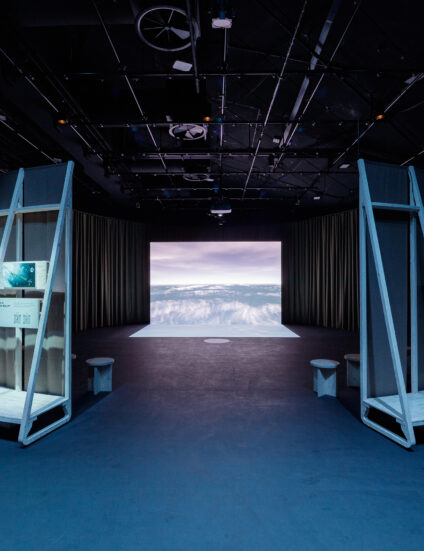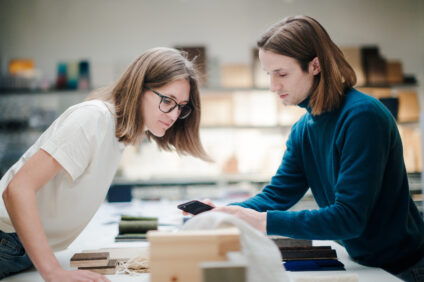PROJECT
Our Time on Earth
Putting sustainability messaging into practice
Designing the landmark Our Time on Earth exhibition at the Barbican

“We wanted to present visitors with a different design future – one that feels positive and attainable – and offer a radical alternative for sustainable exhibition design." —Lisl du Toit, Associate Design Director

“Our main aim was how we can best showcase the narrative that FranklinTill and Luke Kemp were curating: radical visions for a sustainable future.” —Lisl du Toit



As part of this process, the designers embraced seasonality within material production, with consideration given to the growing cycles of different materials and their susceptibility to weather patterns potentially determining availability.

“Our biggest impact with a project like this is to complement the exhibition by showcasing sustainable design. Our key learning from this process has been to recognise that there are already materials out there that were perhaps used in the past and have since fallen from favour, but which we can look at again. These are beautiful, versatile, optimistic materials and, vitally, they’re already available to us.” —Lisl du Toit
















